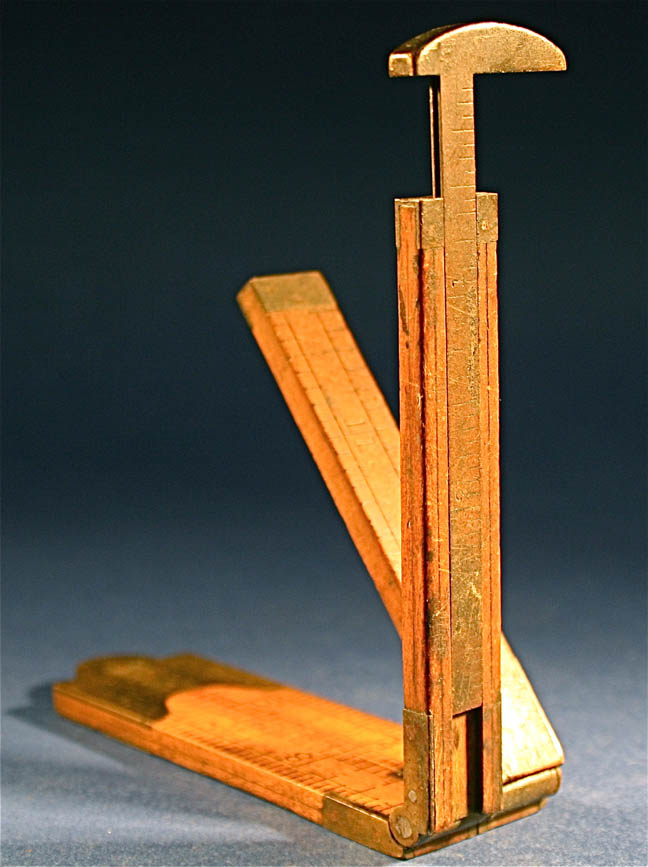

Title: Early Moveable Brass & Wooden Ruler Drafting Straightedge Tool
Shipping: $9.00
Artist: N/A
Period: 19th Century
History: N/A
Origin: N/A
Condition: Very Good
Item Date: 1880 to 1930
Item ID: 4642
Early moveable brass and wooden ruler An early moveable ruler brass sector with folding arms. Antique Woodworking straightedge wooden ruler, this is use as a drafting tool. This 12 inch wooden ruler has a variety of two sided scales. Brass and Boxwood.
Link: http://en.wikipedia.org/wiki/Ruler
Drawing and measuring instrument. A ruler, or rule, is an instrument used in geometry, technical drawing and engineering/building to measure distances and/or to rule straight lines. Strictly speaking, the ruler is essentially a straightedge used to rule lines and the calibrated instrument used for determining measurement is called a 'measure'. However, common usage is that a ruler is a calibrated straightedge that can be used for making measurements. A Rule has the measurements start from the end, whereas a ruler has a gap between the end and the measurements. Rulers have long been made of wood in a wide range of sizes. Plastics have been used since they were invented; they can be moulded with length markings instead of being scribed. Metal is used for more durable rulers for use in the workshop; sometimes a metal edge is embedded into a wooden desk ruler to preserve the edge when used for straight-line cutting. 12 inches or 30cm in length is useful for a ruler to be kept on a desk to help in drawing. Shorter rulers are convenient for keeping in a pocket. Longer rulers, e.g., 18 inches (45cm) are necessary in some cases. Rigid wooden or plastic yardsticks, 1 yard long and metre sticks, 1 metre long, are also used. A ruler and compass construction refers to constructions using an unmarked ruler and a compass. It is possible to bisect and angle into 2 equal parts with ruler and compass. It can be proved, though, that it is impossible to divide an angle into 3 equal parts using only a compass and straightedge—the problem of angle trisection. However, should a single mark be allowed on the ruler, the problem becomes solvable.